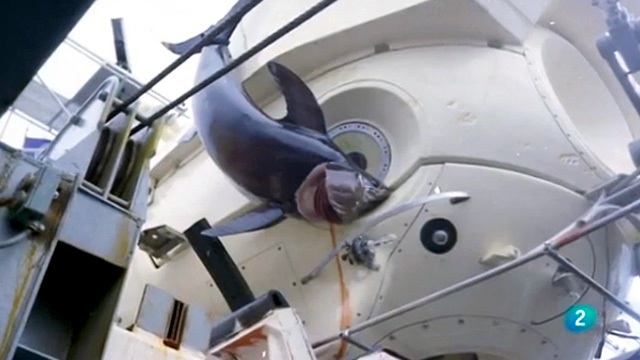This is Alvin, a famous US Navy deep sea submarine. It survived the extreme conditions of deep sea exploration looking for lost hydrogen bombs, surveying the Titanic, and exploring a hydrothermal vent for the first time in history.
But in 1967, it barely survived an encounter with a swordfish. The one sticking out of its hull.
Alvin—named after Woods Hole Oceanographic Institution scientist Allyn Vine—was built in 1964. It was one of the first manned deep sea submarines, a much better vehicle than the original Trieste bathyscaphe, which was too large and hard to maneuver.
Capable of reaching almost 63-percent of the global ocean floor, Alvin became fully operational in July 20, 1965. After its first 6,000-foot US Navy certification dive, the submarine started its run of 4,440 dives across the world.
Its first dangerous mission was the search and rescue of a hydrogen bomb in the Mediterranean sea, off the coast of Palomares, Spain. The bomb fell into the sea after a B-52 collided with a tanker. Alvin and the Navy’s CURV vehicle successfully retrieved it on April 7. Then Alvin had a complete overhaul at Cape Cod.
It was after the overhaul, in 1967, when Alvin got attacked by a swordfish at a depth of around 2,000 feet, during dive number 202—somewhere around the Blake Plateau and Cape Charles, in the Bahamas. The pilots heard a big metallic noise, the whole submarine shook, and something penetrated the outer hull—according to the documentary Superfish.
It was a dangerous situation, so the crew decided to get quickly back to the surface. When its mothership—105-foot catamaran Lulu—lifted Alvin off the surface, they discovered this huge swordfish stuck in the hull.
It may seem impossible, but that’s what happened. It is not that crazy—-according to marine biologist Rick Rosenthal, the producer of the documentary Superfish—these things are extremely aggressive and attack everything, including badass sharks. That’s how these predators—which can weigh 1500 pounds (700 kilograms) and move at 50mph (80km/h)—have survived since prehistoric times.


